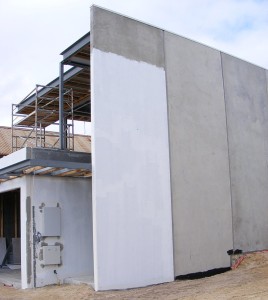 When reading about the manufacturing industry, you may come across the term “prefabrication.” So, what is prefabrication exactly?
When reading about the manufacturing industry, you may come across the term “prefabrication.” So, what is prefabrication exactly?
Prefabrication refers to the process of building and assembling a structure at a manufacturing site and transporting it to a remote site where it’s then used. This is in stark contrast to traditional manufacturing processes in which basic materials — though not necessarily raw materials — are transported to the site. With prefabrication, either complete assemblies or sub-assemblies are constructed at the manufacturing site and then transported to the construction site.
Example of Prefabrication
One of the most common instances in which prefabrication is used involves the construction of houses. As you may already know, the conventional method of house-building involves transporting materials like bricks, cement, steel and sand to the construction site. This can be somewhat tedious and time consuming, which is why many builders prefer prefabrication. Prefabrication allows the builder to transport entire sections of walls, floors, roofs and other elements directly to the construction site.
Advantages of Prefabrication
There are several advantages to using prefabrication, one of which is cost savings. While no two scenarios are the same, companies can typically save money by transporting assemblies and sub-assemblies to the construction site instead of the basic materials. Prefabrication is easier, faster and requires less labor, all of which saves money for the respective company.
Prefabrication can also take advantage of factory tools like cranes and conveyors. As a result, constructing the respective house, building or object is significantly easier than the conventional method of transporting basic materials to the site.
A lesser known benefit of prefabrication is the ability to build assemblies and sub-assemblies without the interference of weather. If a company constructed a house using the conventional method, it would be subject to bad weather. A storm, for instance, could force the company to postpone production. With prefabrication, however, sections can be constructed indoors where workers are protected from bad weather.
Disadvantages of Prefabrication
On the other hand, there are also some disadvantages to prefabrication. Depending on the size of the prefabricated section, it may require heavy machinery to handle and manipulate. Furthermore, transportation and logistics of large sections may also prove burdensome for companies.
With all things considered, though, prefabrication is an excellent and beneficial alternative to conventional methods of construction. It’s typically cheaper, easier and faster. For these reasons, many companies prefer prefabrication when given the option.
